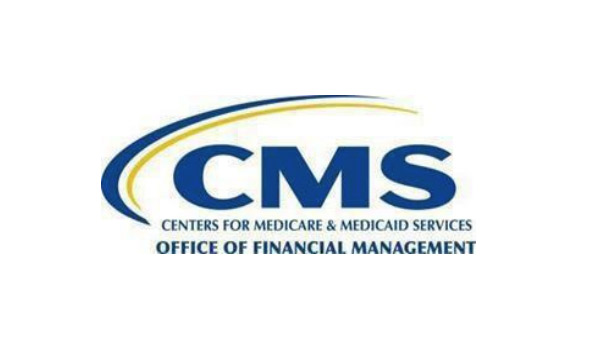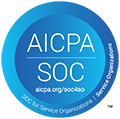Earlier this month the Centers for Medicare and Medicaid Services (CMS) released a revised Workers’ Compensation MSA Reference Guide (WCMSA) (find Version 2.6 here) with several notable changes and additions impacting its review of MSAs in workers’ compensation cases. The Tower MSA compliance team has taken some time to review and consider not only the substantive impact these changes have on our processes, but the implications for our clients. Please find below a summary of the notable changes to the Reference Guide along with practical implications.
Recognition of a Hearing on the Merits of the Case (Section 4.1.4)
The relevant change to this section is as follows:
Because the CMS prices based upon what is claimed, released, or released in effect, the CMS must have documentation as to why disputed cases settle future medical costs for less than the recommended pricing. As a result, when a state WC judge or other binding party approves a WC settlement after a hearing on the merits, Medicare generally will accept the terms of the settlement, unless the settlement does not adequately address Medicare’s interests. This shall include all denied liability cases, whether in part or in full . . .
Practical Implications
Over the years CMS has had several definitions of under what circumstances it will recognize a hearing on the merits, but the takeaway has consistently been that CMS gives itself complete discretion as to whether or not it will recognize a particular judicial decision, order or finding as limiting the MSA. Some commentary in response to the Reference Guide revisions has indicated the changes found in this section will result in Zero MSAs based upon a complete claim denial no longer being approved without a hearing on the merits confirming the basis for the denial. We are not certain this is the correct inference to draw from this change. This section addresses the effect of a hearing on the merits of a case to the projection of future medical care. If there is no hearing on the merits of the case, which is the situation in most MSA submission, Zero MSA or otherwise, then this section should have no applicability to CMS’s review of a Zero MSA.
Tower MSA’s plan is to stay the course on the long-used criteria for a Zero MSA based upon a claim denial unless and until we identify any changes through the MSA submission process which requires modification to these criteria.
Recognition of State-Specific Statutes (Section 9.4.5)
The relevant change to this section as follows:
Submitters requesting alteration to pricing based upon state-legislated time limits must be able to show by finding from a court of competent jurisdiction, or appropriate state entity as assigned by law, that the specific WCMSA proposal does not meet the state’s list of exemptions to the legislative mandate. For those states where treatment is varied by some type of state-authorized utilization review board, the submitter shall include the alternative treatment plan showing what treatment has replaced the treatment in question from the beneficiary’s treating physician for those items deemed unnecessary by the utilization review board. Failure to include these items initially will result in pricing at the full life expectancy of the beneficiary or the original value of treatment without regard to the state utilization review board recommendation.
Practical Implications – State-Legislated Time Limits: Similar towards its policy on recognizing decisions stemming from hearings on the merits, CMS has consistently given itself complete discretion as to when it will recognize any state statute as providing a limitation on the medical care allocated in the MSA. Experience has shown CMS to be unwilling, under most circumstances, to recognize a state statute as having the affect of limiting medical care in the MSA. A notable example is the Georgia statutory provision limiting an employer’s responsibility for medical care to 400 weeks post the date of injury in non-catastrophic claims (applicable to cases with DOIs of 7/1/2013 and later). We have yet to see an instance where CMS has agreed to limit the MSA amount based upon this statute.
The changes to this section of the Reference Guide provide hope that CMS may be more open to recognizing state statutes, like Georgia’s, as a basis for limiting medical treatment and medications in the MSA. Unfortunately, the requirement “to show by a finding from a court of competent jurisdiction . . . that the specific WCMSA proposal does not meet the state’s list of exemptions to the legislative mandate” presents a challenge in attempting to use a statutory provision to limit the MSA. For example, in Georgia a workers’ compensation case is by default considered non-catastrophic unless accepted by the employer or carrier as catastrophic or the claimant’s attorney submits to the Georgia Workers’ Compensation Board a request for the claimant to be designated as catastrophic. It is unclear at this point whether confirming the non-catastrophic nature of the claim in board approved settlement documents or a separate finding by the board that the claim is non-catastrophic will be sufficient for CMS to recognize the limitation. Based upon our experience with similar types of issues, we expect CMS to require a specific finding separate and apart from the settlement documents. Accordingly, this will require settling parties, whether in Georgia or in other states, to work with their WC board, commission or other judicial authority to provide the necessary finding confirming the claim does not meet any of the exemptions to the statute.
Practical Implications – Utilization Reviews: Revisions to this section of the Reference Guide also address the use of URs to limit care in the MSA. According to the requirements delineated by CMS the following must be presented with the MSA submission:
UR denial pursuant “some type of state-authorized utilization review board.”
“Alternative treatment plan” from the treating physician showing what treatment has replaced the UR denied treatment or medications.
The addition of the language regarding URs raises more questions than it answers. What does CMS define as a UR Board? For example, the California Independent Medical Review (IMR) process, while statutorily created, does not include a UR review board (Although we believe it can be argued that the IMR process is equivalent to such a board). Further, CMS fails to define what would be considered an “alternative treatment plan.” It would seem that an intransigent treating physician could refuse to provide alternative treatment, thus resulting in inclusion of treatment or medications in the MSA denied through the UR process. It is unfortunate CMS added this “alternative treatment plan” requirement as it undermines the very reason a UR process is in place, namely to limit medical care based upon evidence-based treatment guidelines. As Tower MSA submits MSAs to CMS with UR denials we will provide further recommendations as to how CMS is defining a “UR board” and “alternative treatment plan.”
Addition of “Amended Review” to Re-Review Policy (Section 16.0)
As fully explained in the Tower MSA article of 7/12/2017, “Second Chance with MSA Approval!: New CMS Policy Allows for Review of a New MSA Post a Prior Approval,” CMS has introduced what is called an Amended Review process for cases meeting the following criteria:
CMS has issued a conditional approval/approved amount at least 12 but no more than 48 months prior,
The case has not yet settled as of the date of the request for re-review, and
Projected care has changed so much that the submitter’s new proposed amount would result in a 10% or $10,000 change (whichever is greater) in CMS’ previously approved amount.
Practical Implications: The Amended Review criteria presents an opportunity to have a second bite at the CMS MSA review apple when it comes to claims which despite having a previously approved MSA, failed to settle medical. It is important to note that the Amended Review process applies not only to MSA determinations resulting in counter-highers, but any MSA determination, approved as submitted or counter-lower, that meets the above-defined criteria. Please contact Tower MSA to discuss eligible claims.
Added Section on Required Resubmission (Section 16.1)
The addition to this section is as follows:
Where a proposed WCMSA amount has been closed due to inactivity for one year or more from the original date of submission, a full-file resubmission will be required.
Practical Implications: Previously a case closed for inactivity for one year or more would be reopened if the submitter provided the documentation in response to a Development Letter (The most common reason for case closure). CMS is now indicating solely providing the documentation in response to the Development Letter will be insufficient for them to reopen, instead a completely new MSA proposal and supporting documentation will be required. Tower MSA will advise when a case meets the criteria for filing a resubmission.
Additional MSA Administration Guidelines (Section 17.1)
The addition to this section is as follows:
Although beneficiaries may act as their own administrators, it is highly recommended that settlement recipients consider the use of a professional administrator for their funds.
Practical Implications: While not requiring professional administration, this is an acknowledgement by CMS of the difficulties a claimant may face on their own in administering an MSA. Tower MSA agrees with CMS on the benefits of professional administration and when requested by our client will provide MSA professional administration through our partner, Ametros.
Other less notable changes found in the Reference Guide apply to clarifying the order of jurisdictional precedence for MSA pricing, updating requirements for spinal cord stimulator pricing, updating off-label medication requirements, clarifying total settlement calculation guidelines and clarification of change of submitter requirements.
Final Comments: While we are pleased CMS is addressing the concerns expressed by Tower MSA and others in the MSP compliance field concerning a second chance at CMS review of an MSA and recognition of state statutory limitations on injury-related medical care, the real test will be in the coming weeks and months the affect these revisions have on the review of MSAs submitted to CMS for approval. Tower MSA continuously monitors these responses and will provide our clients appropriate guidance on the impact, or lack thereof, of these revisions and additions to the WCMSA Reference Guide.




